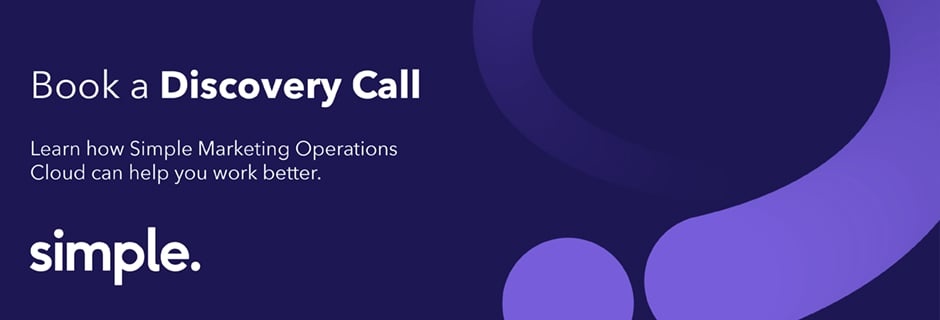
4 Ways AI Will Make Creative Briefs Better
By Jodie Byass
Ad man David Ogilvy once famously said: “Give me the freedom of a tight brief.” A tight creative brief to agency creative teams eliminates time-wasters and tangential information, making it faster and easier to get from the starting point to an effective creative idea. So does a tight marketing brief from marketing teams to agencies.
Rightly or wrongly, for many marketers, the task of writing the brief is often perceived as being time-consuming, repetitive and overly administrative — in short, it feels a long way from being the conduit to creativity it should be. In fact, it’s one area of marketing calling out for the elimination of the unnecessary to unleash the extraordinary.

Artificial intelligence is now being brought to bear to help marketers write better briefs – part of a wave of technological developments that are being used to support and empower creativity in many facets of day-to-day life.
AI is already assisting in many areas of content creation. Adobe Sensei is one example, enabling the rapid discovery, identification and editing of images for asset reuse, and automating asset production and personalization at scale.
Microsoft is also infusing AI into everything it does, including AI-powered speech, vision, search and language technologies for developers on the Microsoft Azure intelligent cloud, its Cortana voice assistant in Windows and automated language translation in Microsoft Office.
For Microsoft-owned professional networking site LinkedIn, “AI is like oxygen — it’s present in every product that we build and in every experience on our platform”. Users experience it in features such as ‘People You May Know’, course recommendations, messaging options to help you communicate with your LinkedIn connections with a single click, and so on. “It helps deliver value to our members across their entire career journey by personalizing their experience,” claims LinkedIn head of relevance science and engineering, Craig Martell.
Yet another example of AI in practice is how Gmail’s Smart Compose feature now finishes your sentences. Opinion seems to be divided between those who are willing to give it a chance, those who find it a little “creepy” and those who see it as an opportunity to mess with Google’s algorithms. Perhaps Google predicted that, however, given it had the foresight to include this qualification: “Smart Compose is not designed to provide answers and may not always predict factually correct information.”
So as we at Simple continue to develop our Marketing Operations platform on Microsoft’s technology stack, we have a few predictions of our own for how the application of AI, machine learning, and other tools will improve the creative brief:
1. Briefs will co-write themselves
Do you cut and paste the same objectives, target persona details and customer insights into 10 different briefs — one for each channel you expect to include in your campaign? It’s a tedious job for many enterprise marketers. Who doesn’t regard repeating manual tasks such as this as a waste of time, an administrative bottleneck or worse — an opportunity to make mistakes?
Those days are fast coming to an end with briefing software that employs AI to help you write the mandatory information you need to include in the brief, saving you time, angst and minimising opportunities for error.
Modern briefs used as part of your overall marketing operations management system will predict the repetitive information they need to include, such as marketing objectives, persona-based information and known customer insights, keeping them aligned with corporate goals. This will eliminate time, energy and money by reducing administrative workloads, minimising off-target creative proposals and slashing the need to re-do off-message creative work.
Download: How to Write the Perfect Brief Guide
2. Briefs will help you manage your campaigns
Once a brief is approved, AI will enable your marketing operations system to identify and generate the appropriate workflow template, so you can get on with the business of getting that work done with absolute transparency and clarity around roles, responsibilities and deadlines.
3. Bots will make requests for re-purposed assets faster and easier
Most marketing teams now spend a considerable amount of time re-purposing work created for one channel — such as Facebook or LinkedIn — for use in others. That creates the need to store, access, use, edit and re-use approved creative assets for multiple channels.
Many marketing teams are poorly acquainted with the approved assets they are able to use, resulting in their under-use and a relatively low return on that creative investment.
But using bots, marketers will be able to pose a natural language question within their marketing operations platform to make it much easier and faster to discover and locate the right assets, eliminating often-fruitless searches, improving productivity and ultimately increasing the return on their marketing budget.
4. Compliance will get a machine-learning boost
Franchisees that might once have gone off-brief with local area marketing, or agents that misrepresent products in emails to prospects will find AI-powered automated compliance technology can scan emails and other marketing materials to ensure they stay on brand, on message and out of trouble with consumers and regulators. Imagine if your marketing compliance technology could raise the spectre that your marketing brief or proposed messaging had crossed the line into misleading advertising territory. Ultimately that could prevent breaches in near-real time, stopping them from making it out to the market and thereby avoiding the expensive costs and associated attention from regulatory watchdogs.
Read next: De-Risk Your Marketing Risk and Compliance Process with Simple
5. Bonus: Briefs will trigger most effective channel mix recommendations
Eventually, AI https://simple.io/ebook-how-to-write-the-perfect-brief-2/will enable your marketing operations platform to predict the best channel mix for a particular campaign type, scanning past campaign results and recommending a playbook for the best mix of channels and timings.
Simple is investing to bring to reality AI-assisted advances to marketing operations, including a more streamlined, intelligent briefing TM process that makes marketing teams more productive and effective, every step of the way.
Of course, one thing that is unlikely to change any time soon is that uniquely human ability to make hitherto-un-thought-of connections to create something entirely new, intriguing and even inspiring. Think Cadbury’s ‘Gorilla’ TVC, Old Spice’s ‘The Man Your Man Could Smell Like’ — even the Fearless Girl statue commissioned by State Street Global Advisers to stare down Wall Street’s Charging Bull. This is where David Ogilvy’s ‘freedom of a tight brief’ really comes into its own. Eliminate the unnecessary. Unleash creativity.
From planning and briefing to review and optimisation, Simple Admation enables marketing teams to reduce complexity and drive growth at every stage of the marketing process. Reach out to one of our consultants to see how it works.
